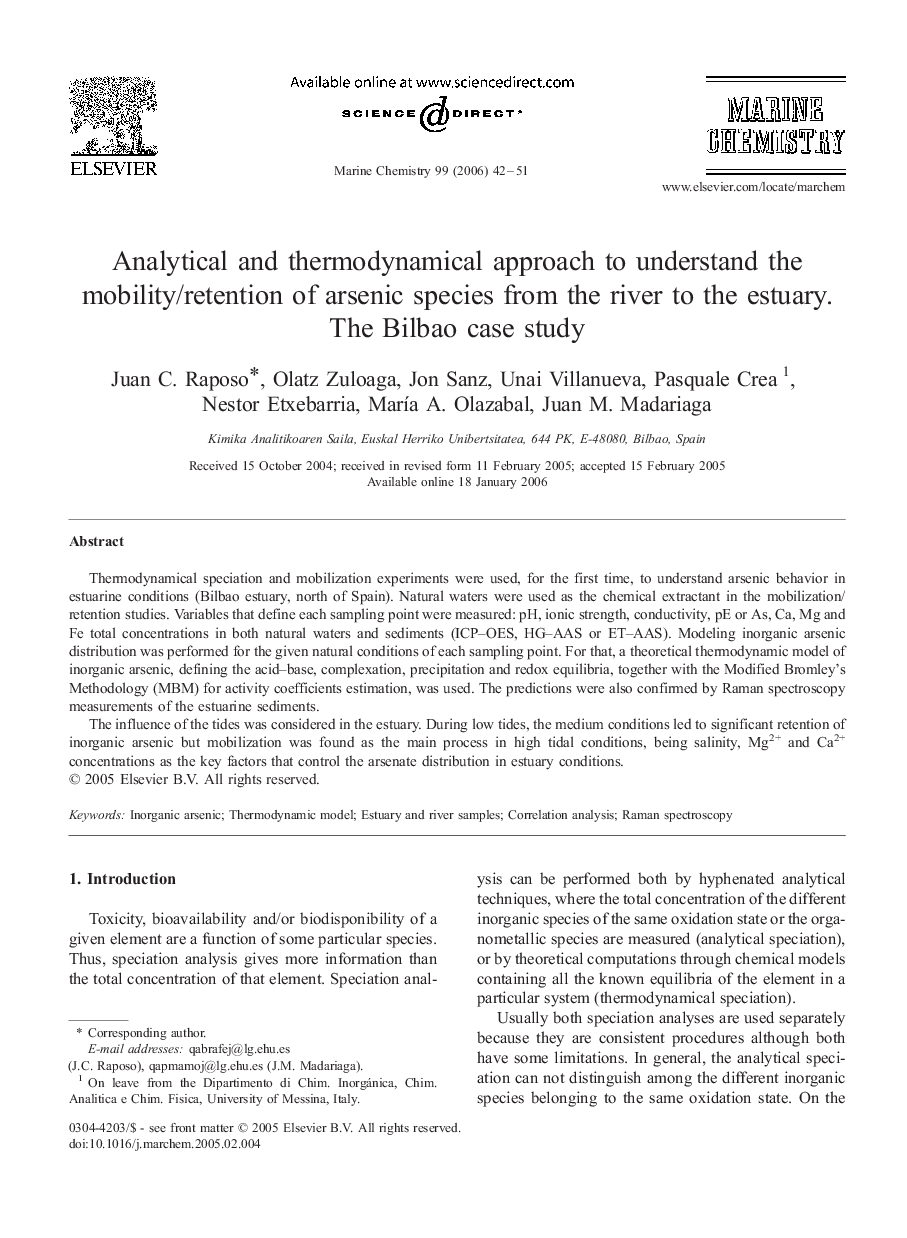| Article ID | Journal | Published Year | Pages | File Type |
|---|---|---|---|---|
| 1263397 | Marine Chemistry | 2006 | 10 Pages |
Thermodynamical speciation and mobilization experiments were used, for the first time, to understand arsenic behavior in estuarine conditions (Bilbao estuary, north of Spain). Natural waters were used as the chemical extractant in the mobilization/retention studies. Variables that define each sampling point were measured: pH, ionic strength, conductivity, pE or As, Ca, Mg and Fe total concentrations in both natural waters and sediments (ICP–OES, HG–AAS or ET–AAS). Modeling inorganic arsenic distribution was performed for the given natural conditions of each sampling point. For that, a theoretical thermodynamic model of inorganic arsenic, defining the acid–base, complexation, precipitation and redox equilibria, together with the Modified Bromley's Methodology (MBM) for activity coefficients estimation, was used. The predictions were also confirmed by Raman spectroscopy measurements of the estuarine sediments.The influence of the tides was considered in the estuary. During low tides, the medium conditions led to significant retention of inorganic arsenic but mobilization was found as the main process in high tidal conditions, being salinity, Mg2+ and Ca2+ concentrations as the key factors that control the arsenate distribution in estuary conditions.
